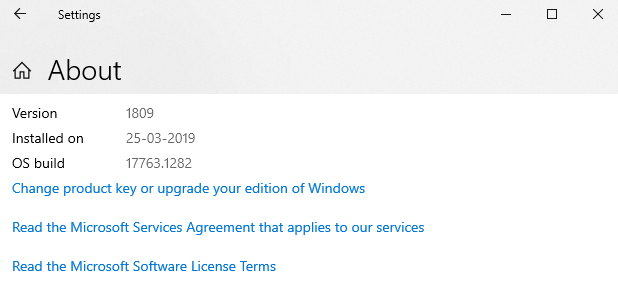We’d love to watch movies, play games and run apps on high resolutions, isn’t it? Who wouldn’t? And Windows 10 does give us that sort of leverage. Not just Windows 10 but every other screen that you could connect to Windows 10 – could be another TV screen, another monitor display or anything else. But, it might not be as simple as it sounds. Will you have to check certain specifications and tweak some settings to turn on HDR in Windows 10?
And, we will ease out everything for you in that regard. But first things first –
What Is HDR In The First Place?
HDR is short for High Dynamic Range. When you enable HDR in Windows 10, you’ll get more vibrant, brighter and better-colored graphics for your games, apps and movies. You can extend the functionality to other screens and enable HDR settings on all Windows 10 screens such as external monitors, laptop screen and TV.
And though the setup per se is simple enough, your PC should be compatible and support HDR. So, before we delve into how you turn on HDR in Windows 10, let’s have a look at some prerequisites –
|
Prerequisites (Requirements) For Built In Existing Display and Any External Displays |
||
| Existing Display | If You Are Connecting An External Display | Points Common For Both Existing And External Displays |
|
– Windows 10 running on at least version 1803 (look for April 2018 update) or better if you can get hands- on the latest update, that’ll be the best thing – Update your graphics driver. You can read a detailed guide here or run a driver updater software such as Advanced Driver Updater which will automatically find the right graphics driver as per the specifications of your PC and update it. – Minimum resolution requirements are 1920 X 1080 pixels which is more common terms is known as 1080p – Minimum brightness required is 300 nits – Windows processor that can easily decode 10-bit videos. The best example is Intel i7 or higher. |
– Go for a display port 1.4
– HDMI 2.0
– USB – C connections |
– Graphics card that has 10-bit decoding capability and supports PlayReady 3.0 (E.g., Nvidia GeForce 1000, AMD Radeon RX 400 series, etc.) |
Also Read: Here’s how you can set up multiple monitors on a Windows 10 PC
To check everything about your existing built-in display, here’s how you can get everything at a glance. Yes! We are in short, going to check the devices information –

- Open Settings. The shortest possible way is to press the Windows + I keys
- Go to System
- Scroll down to the last option and click on About. All the specifications about your PC will be in front of your eyes
Check If On Your Laptop Or PC You Can Turn On Windows HDR
- Press the Start button and follow the path mentioned below
Settings > System > Display
Note: You may have to choose the HDR capable display under the head Rearrange your displays in case you have multiple displays
- Click on Windows HD Color Settings
- Locate Display capabilities and check if it says Yes under
- Stream HDR Video
- Play HDR games and apps
- Use WCG apps.
| What Are WCG Apps?
WCG stands for wide color gamut. These are the apps that show you more detailed graphics and colors as opposed to SDR (Standard dynamic range) apps. |
- Toggle the Play HDR games and apps and Stream HDR video buttons to the right
Steps To Turn On HDR Settings On Windows

- Follow the path Settings > System > Display
- If you have multiple monitors, you will get Rearrange your displays option. Select the monitor on which you want to activate the HDR settings. It would be numbered as 1 or 2
- Under the Windows HD Color settings toggle the Play HDR Games And Apps switch
– You may even toggle the Stream HDR video to the right if you wish to watch your videos in high resolution. For instance, in the case of binging on Netflix movies.
– Adjust the brightness of SDR content appearance
Additional Tips For External Screens
– Find HDR capabilities on the screen of the device you have connected. For example, in some TV displays, the HDR signal is detected by default, whereas in some TV displays, you may have to tweak the settings that let you change the HDR color capabilities.
– Choose the right HDMI port. For example, if your PC is plugged into HDMI 2, you may have to go to your TV’s input settings and choose HDMI 2 which shall be labelled as PC
How Did The Above Steps Work For You
We hope that after you turn on HDR settings in Windows 10, you will easily be able to view your desired movies, play games and run other applications in greater detail. And, not just on your laptop or PC’s computer screen but even if you are hooked on to other screens as well. Till then you can check out Systweak blogs for more troubleshooting content and other tech-related stuff.Follow us on social media – Facebook, Instagram and YouTube.


 Subscribe Now & Never Miss The Latest Tech Updates!
Subscribe Now & Never Miss The Latest Tech Updates!